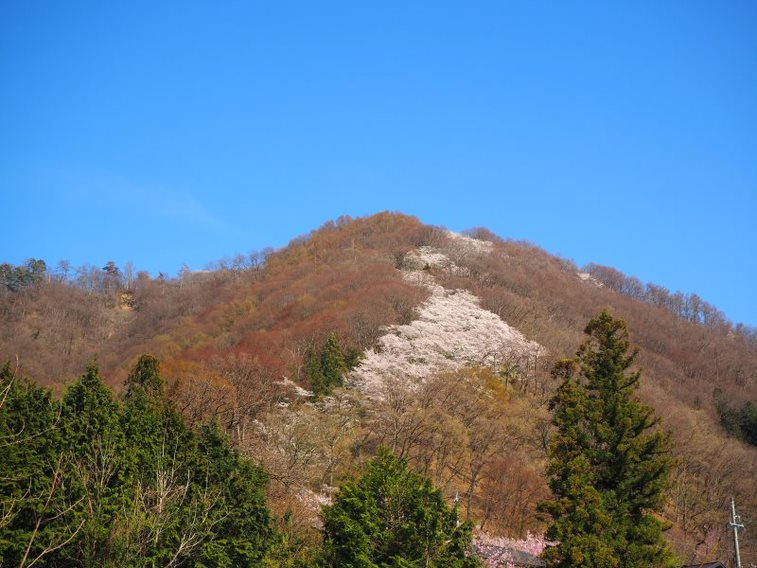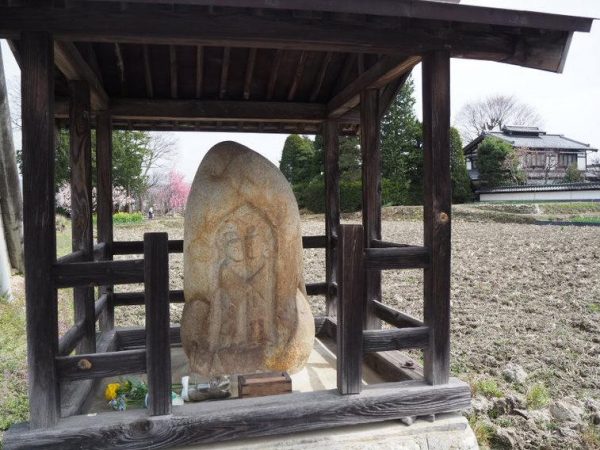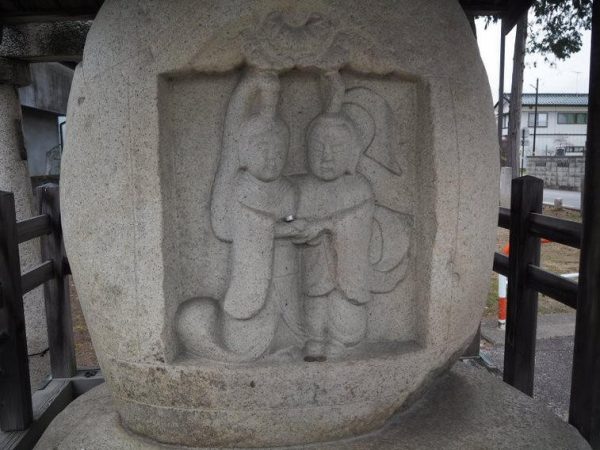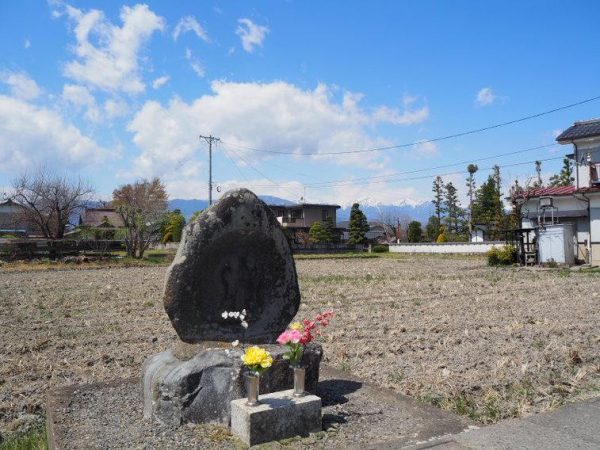April 2021
The last stage of the Shionomichi Trail going into Matsumoto was not nearly as boring as I thought it might be. Our daughter, Nicola, accompanied me so that might have made it more interesting as she doesn’t tolerate navigation errors and so I had to be on my toes! I assumed it would be boring because, like the section leading to it from Ikeda to Toyoshina, the trail is mostly flat and passing through farmland and villages and walking on hard roads. The last few kilometers pass through the suburbs, and then into the city of Matsumoto, including its impressive 400-year-old black castle.
Also, it was a pleasant day for walking, around 18 degrees, windless with a clear blue-sky. The Japanese Spring was bursting forth, with its cherry blossoms, daffodils and other flowers and green shoots all making an appearance.
We parked our car at JR Toyoshina Station, which is only 200m from the trail, and headed south-east towards Matsumoto. Our first stop was this giant 350-year-old Gingko tree (Maidenhair) – its leaves had still not come out but I could imagine how impressive its golden leaves would be in the autumn.
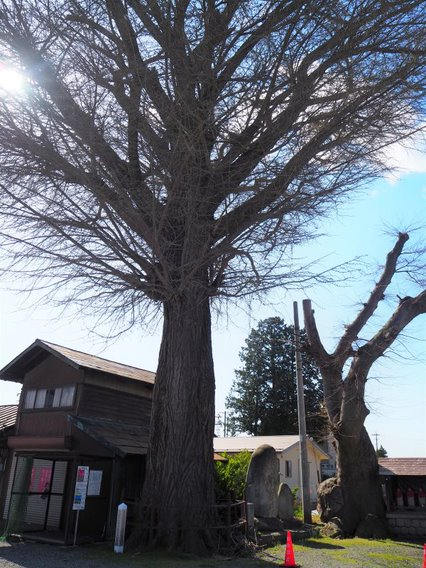
The North Alps still draped in snow. They grow winter wheat and barley around these plains, which is what is growing in the foreground. There are some nice farmhouses along the road.
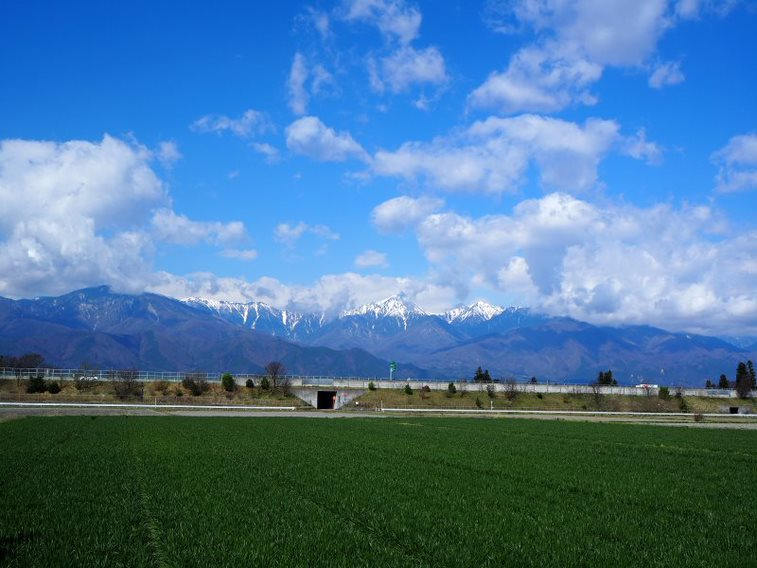
Our next stop was the remains of this temple entrance, with two long rows of small stone carvings.
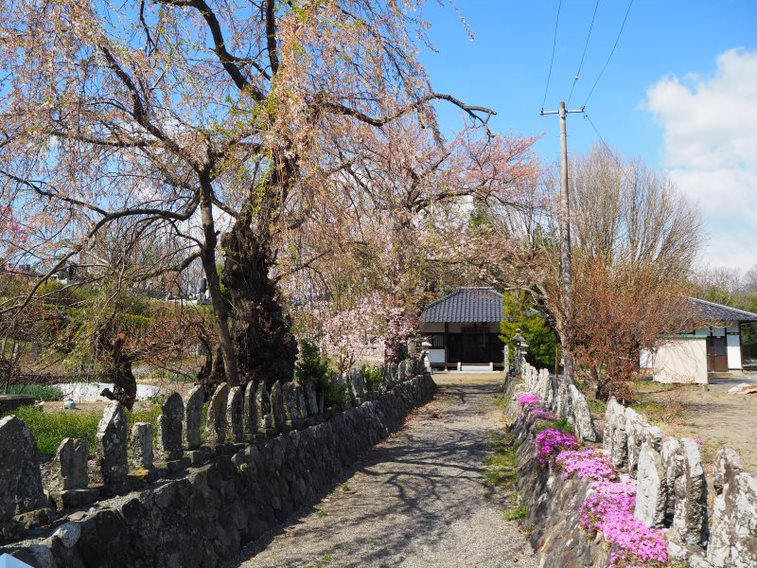
Until about 60 years ago apparently, the last major river crossing before approaching Matsumoto, was here, where the river was narrowest and easiest to cross. It is a lovely quiet spot now where we had morning tea under the cherry blossoms.
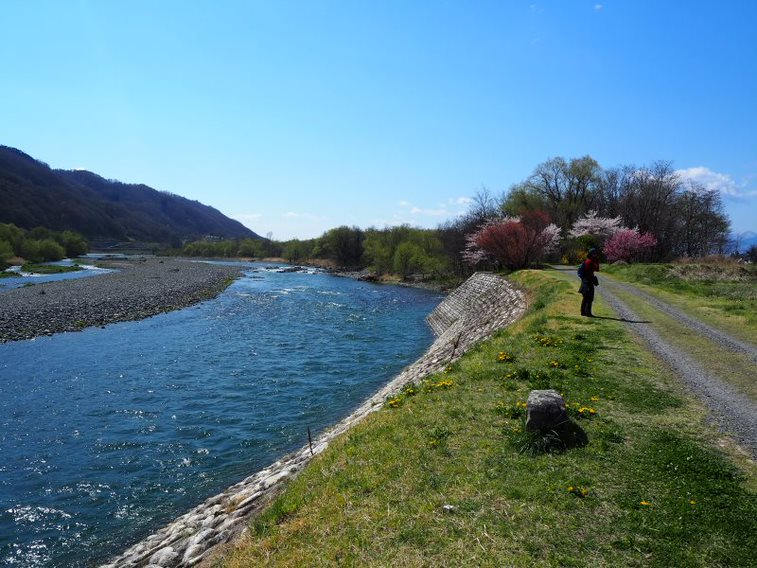
This farmer is preparing his vegetable patch.
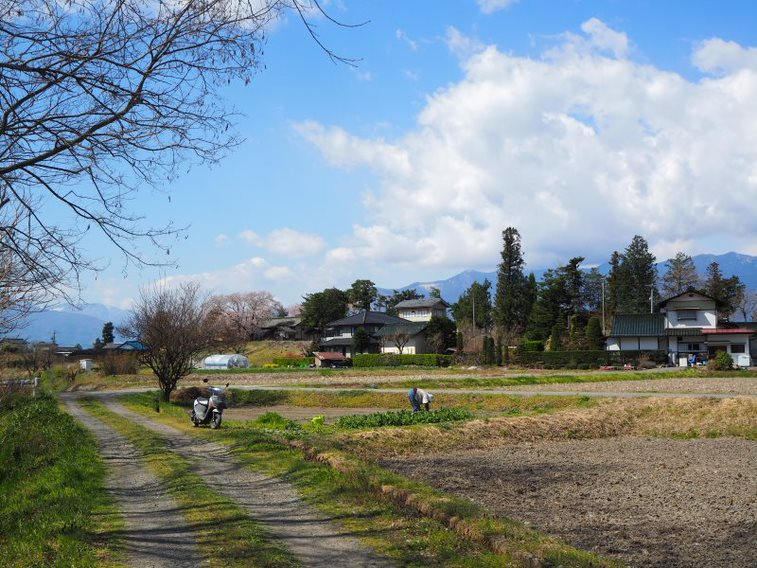
We came across this unusual solar farm installed on top of grape vine trellises.
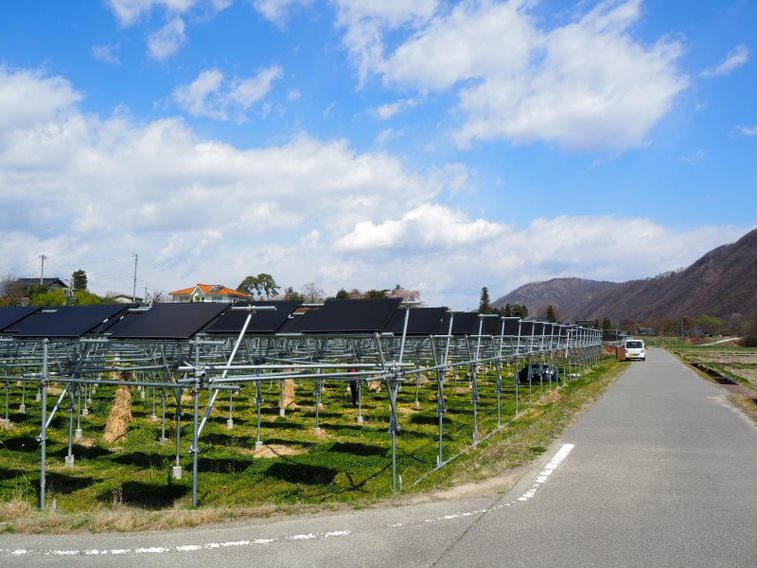
This area of Nagano is known for its stone carvings of husbands and wives, called ‘Dosojin’, which are placed by the side of the road for the peace and health of the community. They are very warm and lovely carvings that come in different designs and sizes.
We finally reached the point where we could cross the river, and fortunately it was a cycle bridge and not the main road.
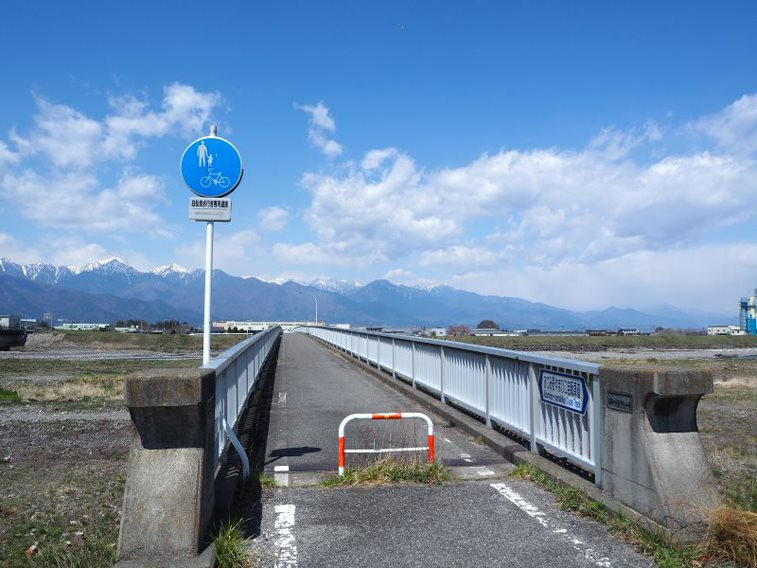
There were lots of ducks under the bridge.
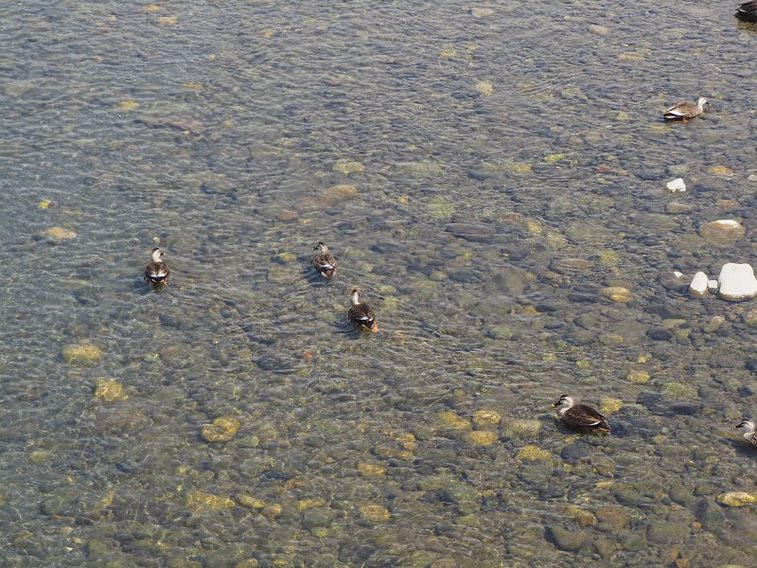
Only a few kilometers from Matsumoto City, but still walking in rural neighborhoods.

A few old Shinshu style houses line the road.
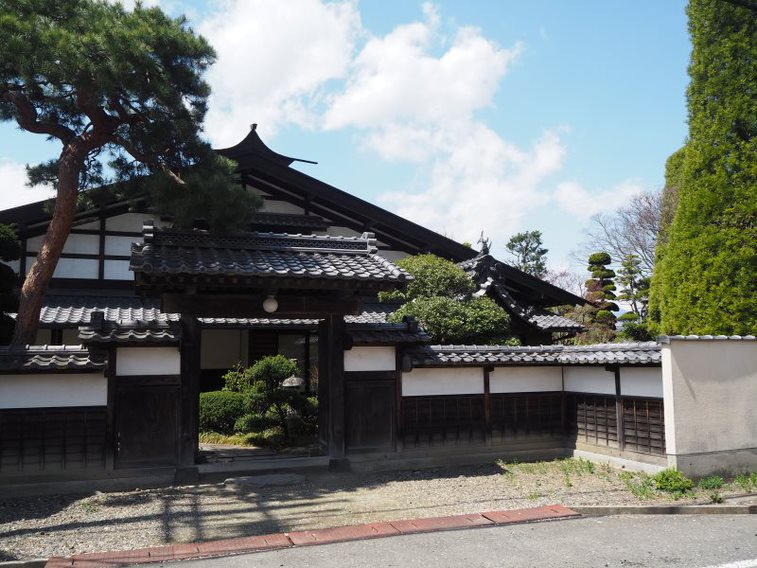
We now were in suburbs of Matsumoto, the second largest city in Nagano with a population of about 250,000. We came across this Dosojin carved in 1859. It is unusual because instead of the carving of a couple, it has the Chinese characters “Dosojin” and on the back it has a carving of a penis!
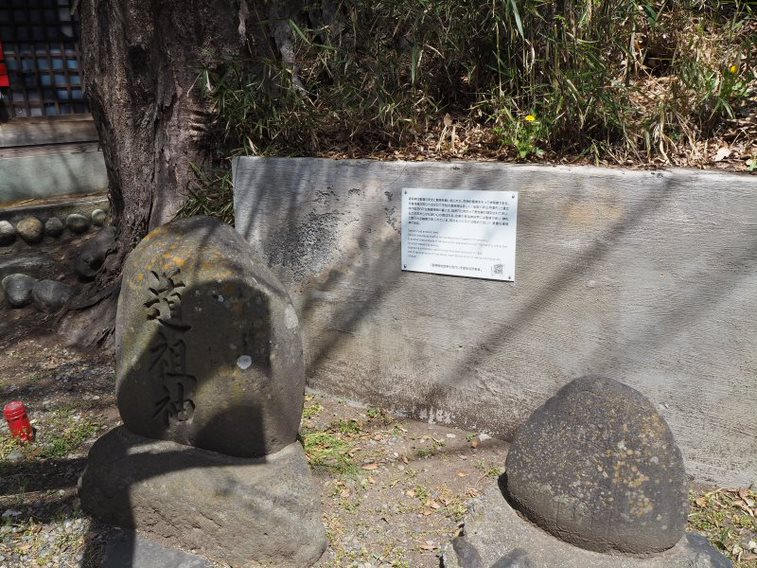
It was lunchtime and as planned, we arrived at our favorite hamburger joint in Japan: Oldies b Goodies. They have 10 or so types you can order, including a vegetarian/GF hamburger, which Nicola had. I had the avocado and bacon – delicious and filling after a long morning walk. The café/restaurant is inside a lovely old salt merchants building on the trail, just a kilometer from Matsumoto Castle.
After our well–earned lunch, we sauntered over to the castle to capture it with the Sakura (cherry) blossoms. What a lovely sight!
We then walked to what is considered as the start/finish of the Shionomichi Trail. This is a stone with a hole in it, where the drivers of the oxen carrying the heavy salt bags on the trail would tie up their oxen. There are only about half a dozen remaining on the trail now.
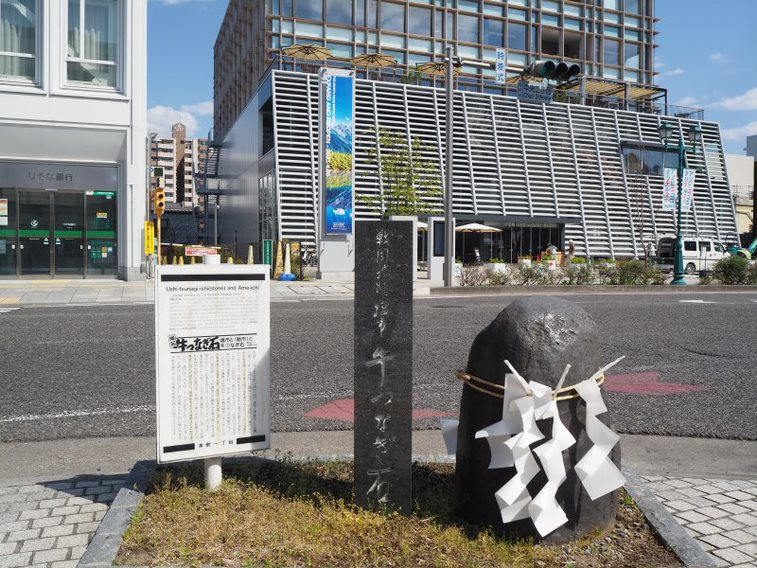
We then walked to Matsumoto Station and caught the two–carriage local train on the JR Oito Line back to where we left our car at Toyoshina. It took 20 minutes to cover the 18 kilometres that we had taken 6 hours to walk. On the way home we drove over to this mountain that we had spied in the distance. It had a line of pink running right up the mountain. It turned out to be the “Rising Dragon Sakura Trail” – a popular hiking trail with walking under thousands of cherry trees planted in the forest to the top of a mountain. The blossoms were in full bloom so we couldn’t resist the chance for another hike! (no bears were spotted)
